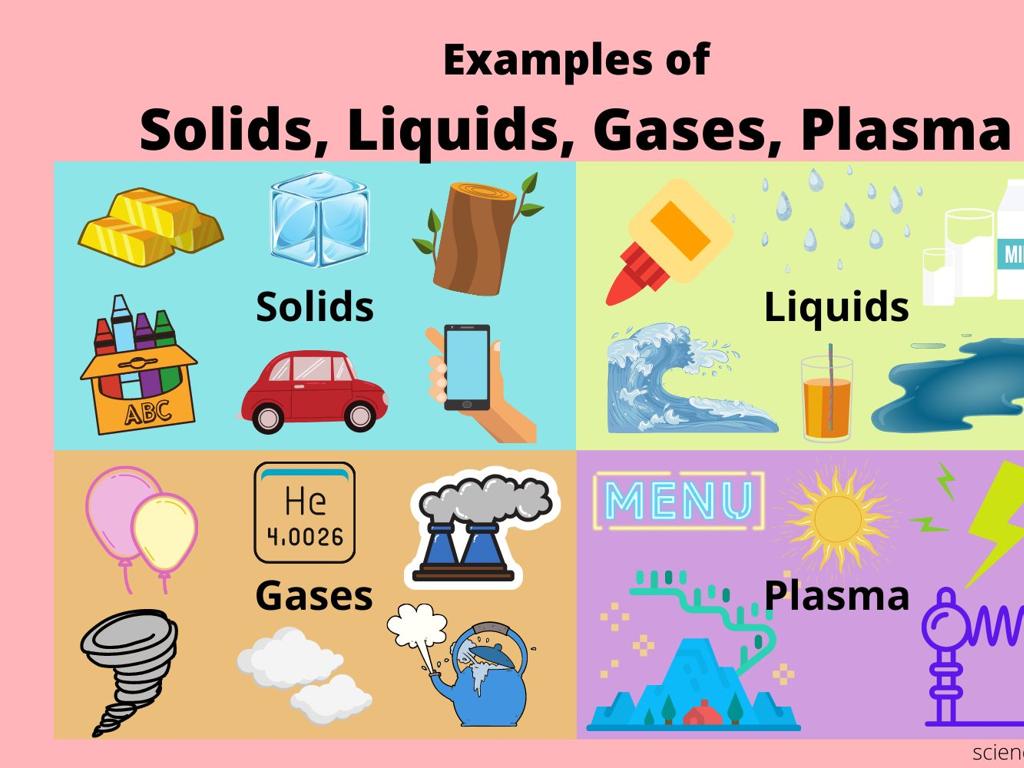Laboratory Safety Equipment
Subject: Science
Grade: Seventh grade
Topic: Science Practices And Tools
Please LOG IN to download the presentation. Access is available to registered users only.
View More Content
Welcome to Science Lab Safety
– Importance of lab safety
Safety prevents accidents and ensures everyone’s well-being.
– Key safety rules in the lab
Always follow instructions, wear protective gear, and report spills.
– Types of safety equipment
Learn about goggles, gloves, aprons, and fire extinguishers.
– Using equipment safely
We’ll discuss proper use and maintenance of safety equipment.
|
This slide introduces students to the fundamental concepts of laboratory safety, emphasizing the importance of maintaining a safe environment to prevent accidents and injuries. It’s crucial to instill in students the habit of following safety rules, such as wearing appropriate protective gear, adhering to instructions, and understanding the correct use of safety equipment. Highlight the types of safety equipment they will encounter, including goggles to protect eyes, gloves for handling chemicals, aprons to protect clothing, and fire extinguishers for emergencies. Encourage students to ask questions about each piece of equipment and discuss scenarios where they would be necessary. The goal is to prepare students to act responsibly and safely in the lab.
Personal Protective Equipment (PPE) in the Lab
– Understanding PPE and its importance
– PPE helps protect against lab accidents and exposure to hazardous substances.
– Different types of PPE in the lab
– Lab coat shields clothing, goggles protect eyes, gloves guard hands.
– Correct usage of lab PPE
– Learn how to wear and remove PPE without contaminating yourself.
– Safety first with proper PPE
|
This slide aims to educate students on the importance of Personal Protective Equipment (PPE) in maintaining safety within the laboratory environment. Emphasize that PPE is the first line of defense against potential accidents and harmful exposures. Discuss the various types of PPE such as lab coats, goggles, and gloves, and their specific protective functions. Demonstrate the proper methods to don and doff PPE to ensure maximum protection and minimal contamination. Reinforce the concept that safety is a priority in all scientific practices and that proper use of PPE is a critical habit for all aspiring scientists.
Safety Shower and Eye Wash Station
– Locate the safety shower
– Usually found near lab exits, for emergency decontamination
– Using the eye wash station
– Rinse eyes immediately after chemical exposure
– Demonstration of proper use
– We’ll show correct operation during class
– Safety practices recap
|
This slide is crucial for ensuring student safety in the laboratory. The safety shower is typically located near the lab exits and is used for emergency decontamination, such as after a chemical spill on clothing or skin. The eye wash station is essential for rinsing the eyes in case of chemical exposure. It’s important to demonstrate the proper use of these safety tools to the students, including how to quickly locate and operate them. Emphasize the urgency of using these stations immediately after exposure to prevent injury. After the demonstration, recap the safety practices and encourage students to ask questions if they’re unsure about the procedures.
Fire Safety Equipment in the Lab
– Different fire extinguishers
– Water, CO2, foam, dry powder, and wet chemical extinguishers for various fires
– Fire blanket functions
– Used to smother small fires or wrap around a person whose clothes are on fire
– Lab fire safety procedures
– Evacuation routes, using extinguishers, and emergency contacts
|
This slide aims to educate students on the essential fire safety equipment found in a laboratory setting. Discuss the types of fire extinguishers, emphasizing the importance of matching the extinguisher type to the class of fire. Explain the use of a fire blanket and its role in extinguishing small fires or as a protective wrap. Outline the key fire safety procedures, including knowing evacuation routes, the PASS technique for using extinguishers (Pull, Aim, Squeeze, Sweep), and the importance of alerting emergency services. Reinforce the message that safety is the top priority and that proper use of equipment can prevent accidents.
First Aid Kit: Laboratory Safety Equipment
– Essential items for emergencies
– Bandages, antiseptics, gloves, and more
– Handling minor injuries
– Clean, apply pressure, and bandage
– Recognizing when to get help
– If injury is severe, seek professional aid
– Safety first in the lab
|
This slide introduces students to the importance of a first aid kit in a laboratory setting, emphasizing the need for preparedness in case of an accident. Discuss the essential items that should be included in a first aid kit, such as bandages, antiseptics, sterile gloves, and tweezers. Teach students the basic steps for handling minor injuries, including cleaning the wound, stopping bleeding with pressure, and applying a bandage. It’s crucial to also understand when an injury is too serious for a simple first aid response and professional medical help is required. Reinforce the concept of ‘safety first’ to prevent accidents and ensure a safe learning environment in the lab.
Chemical Spill Kit: Safety First!
– Essential components in a spill kit
– Gloves, goggles, absorbents, and disposal bags
– Steps for safe spill cleanup
– Secure area, use PPE, contain spill, dispose correctly
– Reporting spills is crucial
– Always inform a teacher about any spills immediately
|
This slide aims to educate students on the importance of chemical spill kits in the laboratory. It’s essential for students to recognize the components of a spill kit, including personal protective equipment like gloves and goggles, absorbents for the spill, and proper disposal bags for contaminated materials. The slide also outlines the steps to take when cleaning up a spill: securing the area to prevent further contamination, using personal protective equipment (PPE) to protect oneself, containing the spill using absorbents, and disposing of the waste correctly. Emphasize the importance of reporting any spills to a teacher immediately, regardless of the size, to ensure proper handling and safety for all. The notes provide additional context and stress the importance of safety and proper procedures in the lab.
Understanding the Fume Hood
– What is a fume hood?
– A ventilated enclosure in a chemistry lab, used to limit exposure to hazardous or toxic fumes.
– Importance of using a fume hood
– Protects users from inhaling toxic gases; essential for a safe working environment.
– Safe practices with fume hoods
– Always keep your face outside the plane of the hood, confirm the hood is on before use.
– Maintaining lab safety
– Regular checks and maintenance ensure a safe lab environment for everyone.
|
A fume hood is a critical piece of safety equipment in any laboratory that deals with hazardous chemicals. It’s designed to exhaust fumes away from the user and the lab environment, thus preventing inhalation of dangerous substances. Emphasize the importance of using fume hoods when conducting experiments that can release toxic gases. Teach students the correct way to work with a fume hood, including how to check if it’s functioning and the importance of keeping their head outside the hood’s plane. Discuss the role of fume hoods in maintaining overall lab safety and the responsibility of each person to ensure it’s used correctly. Regular maintenance and proper usage are key to keeping a safe and functional lab environment.
Emergency Procedures in the Lab
– Know your evacuation routes
– Familiarize yourself with the nearest exits and paths.
– Practice emergency drills regularly
– Drills help prepare for real emergencies.
– Steps to take during an accident
– Follow lab safety rules and report accidents immediately.
– Importance of staying calm
– Keeping a clear head helps manage the situation effectively.
|
This slide aims to educate students on the critical aspects of emergency procedures in a laboratory setting. It’s essential for students to know the evacuation routes from the lab to ensure a quick and orderly exit in case of an emergency. Regular emergency drills are crucial for preparing students to act swiftly and correctly. In the event of an accident, students should be aware of the immediate steps to take, such as informing the teacher, using safety equipment like fire extinguishers or eye wash stations, and helping others if safe to do so. Emphasize the importance of remaining calm during an emergency, as panic can lead to further hazards. The teacher should discuss specific scenarios and appropriate responses to reinforce these concepts.
Class Activity: Safety Scavenger Hunt
– Locate lab safety equipment
– Discuss equipment usage with a peer
– Consider scenarios like spills or fires
– Present findings to the class
– Understand safety equipment importance
– Emphasize how each item contributes to a safe lab environment
|
This interactive class activity is designed to familiarize students with the various safety equipment available in the laboratory. Students will work in pairs to locate and identify each piece of safety equipment. They should discuss potential scenarios where each item would be necessary, such as using a fire extinguisher during a small fire or goggles to protect eyes from splashes. After the scavenger hunt, each pair will present their findings, explaining the purpose and proper use of the equipment they found. The teacher should prepare a list of equipment to be found, ensure all students participate, and facilitate discussions on the importance of each item for maintaining a safe laboratory environment. Possible variations of the activity could include creating a map of the lab with the equipment locations or a quiz on the use of each item.
Lab Safety Recap & Pledge
– Review of safety equipment
– Goggles, gloves, aprons protect us from harm.
– Importance of safety procedures
– Following procedures prevents accidents.
– Commit to the safety pledge
– A promise to always prioritize safety in the lab.
|
As we conclude, it’s crucial to recap the various pieces of safety equipment we’ve learned about, such as goggles, gloves, and aprons, and their specific uses in protecting us during lab activities. Emphasize the importance of adhering to safety procedures at all times to prevent accidents and ensure a safe learning environment. Finally, lead the class in taking a safety pledge, reinforcing their commitment to always follow the safety guidelines. This pledge can be a powerful moment that instills a sense of responsibility and the importance of safety in the lab.






